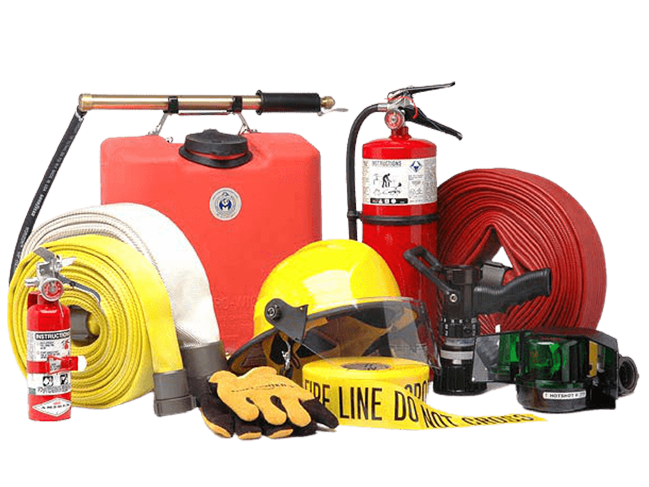A Comprehensive Guide to Heat Detectors
A Comprehensive Guide to Heat Detectors: Types, Uses, and Benefits

Introduction
When it comes to fire safety, heat detectors play a crucial role in providing early warnings, minimizing damage, and saving lives. While smoke detectors are more common, heat detectors are an excellent alternative in environments where smoke and dust could cause false alarms. In this blog, we’ll explore the different types of heat detectors, their uses, how they work, and why they are essential for both residential and commercial safety systems.
What is a Heat Detector?
A heat detector is a fire detection device designed to sense temperature changes in the environment. Unlike smoke detectors that respond to airborne particles, heat detectors trigger an alarm when the temperature rises to a predetermined threshold or when a rapid increase in temperature is detected. These detectors are particularly useful in places where smoke or dust could interfere with traditional smoke alarms.
How Do Heat Detectors Work?
Heat detectors function by sensing changes in temperature and triggering an alarm when a specific threshold is met. They use different mechanisms based on their type:
Fixed Temperature Heat Detectors
These detectors contain a heat-sensitive element, such as a thermistor or a fusible link, that responds when the surrounding temperature reaches a pre-set limit. Once the temperature surpasses the threshold, the circuit is completed, triggering the alarm.
Rate-of-Rise (ROR) Heat Detectors
These detectors measure the rate at which the temperature increases over a short period. If the temperature rises rapidly, the detector activates an alarm even before the fixed threshold is reached.
Combination Heat Detectors
These detectors integrate both fixed temperature and rate-of-rise mechanisms to ensure a more comprehensive fire detection system.
Heat detectors are usually connected to a fire alarm system, ensuring a quick response in the event of a fire. Some models are standalone devices with built-in alarms, while others work as part of a networked safety system.
Types of Heat Detectors
Fixed Temperature Heat Detectors
Fixed temperature heat detectors activate when the surrounding air reaches a pre-set temperature. Most standard models have a threshold of around 135°F (57°C) or 194°F (90°C) for high-temperature environments. These detectors work well in kitchens, garages, and mechanical rooms where occasional smoke or fumes might trigger false alarms in smoke detectors.

Rate-of-Rise (ROR) Heat Detectors
Rate-of-rise heat detectors respond to sudden increases in temperature, typically around 12–15°F per minute. These detectors are highly effective in detecting rapid fire development before temperatures reach extreme levels. ROR detectors are ideal for areas with fluctuating ambient temperatures, such as attics, warehouses, and industrial sites.

Combination Heat Detectors
Some advanced models combine fixed temperature and rate-of-rise technologies, providing comprehensive fire detection. These hybrid detectors offer a dual layer of protection, making them suitable for a variety of environments where both gradual and rapid temperature changes could occur.

Fixed Temperature Heat Detectors

Fixed temperature heat detectors activate when the surrounding air reaches a pre-set temperature. Most standard models have a threshold of around 135°F (57°C) or 194°F (90°C) for high-temperature environments. These detectors work well in kitchens, garages, and mechanical rooms where occasional smoke or fumes might trigger false alarms in smoke detectors.
Rate-of-Rise (ROR) Heat Detectors

Rate-of-rise heat detectors respond to sudden increases in temperature, typically around 12–15°F per minute. These detectors are highly effective in detecting rapid fire development before temperatures reach extreme levels. ROR detectors are ideal for areas with fluctuating ambient temperatures, such as attics, warehouses, and industrial sites.
Combination Heat Detectors

Some advanced models combine fixed temperature and rate-of-rise technologies, providing comprehensive fire detection. These hybrid detectors offer a dual layer of protection, making them suitable for a variety of environments where both gradual and rapid temperature changes could occur.
Applications of Heat Detectors
Heat detectors are used in various residential, commercial, and industrial settings. Here are some common applications:
- Kitchens – Prevents false alarms caused by cooking smoke while ensuring fire detection.
- Garages and Workshops – Detects fires caused by flammable materials or vehicle malfunctions.
- Warehouses and Storage Facilities – Provides reliable fire detection in large spaces with changing temperatures.
- Boiler Rooms and Mechanical Areas – Monitors high-temperature areas prone to overheating.
- Hotels and Dormitories – Ensures safety without being affected by dust, steam, or humidity.
Benefits of Heat Detectors
Reduced False Alarms
Unlike smoke detectors, heat detectors do not react to dust, smoke, or steam, making them ideal for areas where such conditions are common.
Reliable Fire Detection
Heat detectors provide a dependable solution for detecting fires, especially in environments where traditional smoke alarms might fail.
Enhanced Safety in High-Risk Areas
Places with high temperatures or potential fire hazards benefit significantly from heat detectors as they detect actual fire conditions rather than smoke.
Low Maintenance
Since they do not rely on smoke particles, heat detectors require less frequent cleaning and maintenance compared to smoke detectors.
Conclusion
Heat detectors are an essential component of any fire safety system, providing reliable detection in areas where smoke alarms may not be effective. Whether for residential, commercial, or industrial use, these devices help enhance fire safety, reduce false alarms, and ensure timely responses in case of a fire emergency. When choosing a heat detector, consider the specific needs of your environment and consult a fire safety expert for the best protection.
By investing in high-quality heat detectors, you take a crucial step toward protecting lives and property from the devastating effects of fire. Stay safe and prioritize fire prevention in your home and workplace!






